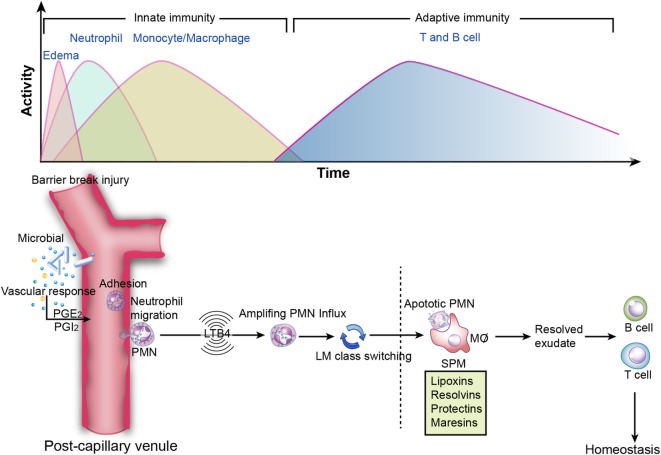Figure 3.
Inflammation resolution. Top image: innate and adaptive immunity in inflammation. During the initiation of inflammation, tissue edema is followed by polymorphonuclear neutrophil (PMN) influx and then a return to baseline, accompanied by the recruitment of monocytes and macrophages for resolution. Sequentially, effector T and B cells transform to memory T and B cells, which is essential for the secondary immune response. However, if resolution is not achieved, then the outcome is sustained inflammation (chronic inflammation). Bottom image: specialized pro-resolving mediators in the acute inflammatory response. PGE2 leads to vasodilation, and LTB4 stimulates PMN influx to the inflammatory loci. Subsequently, lipid mediator (LM) class switching converts pro-inflammatory signals to pro-resolving signals and triggers resolution. Lipoxins and resolvins restrict excessive PMN influx to the injury site, enhance efferocytosis, and stimulate pro-resolving signals and adaptive immunity.

